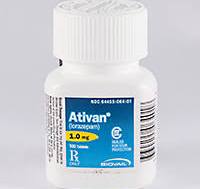In several industries, including manufacturing, automotive, and construction, welding is a necessary operation. It involves applying intense heat to combine materials, usually metals, to form a strong bond that is essential for structural stability. But even though welding is an essential profession and skill, there are unaddressed health dangers associated with the process. The hidden risks associated with welding are examined in this article, along with any health concerns and the precautions that must be taken to keep welders safe.
Recognizing the Health Hazards
Fumes, sparks, and radiation released during welding bad for your health can cause both short-term and long-term health problems. The following are some of the main health hazards that welding poses:
1. Issues with the Respiratory System
The metal vapors that welders are exposed to can lead to respiratory issues. Heat causes metals to produce poisonous vapors made up of different metal oxides. Zinc, manganese, and lead are common welding materials that might aggravate respiratory conditions.
An acute disease known as “Metal Fume Fever” is brought on by breathing in metal vapors, especially zinc oxide. Fever, chills, coughing, and muscle pains are some of the symptoms, which frequently resemble those of the flu.
COPD stands for chronic obstructive pulmonary disease. Chronic welding fume exposure can result in chronic obstructive pulmonary disease (COPD), a degenerative illness that impairs lung function and causes breathing problems.
Lung Cancer: Welders who work with stainless steel or other alloyed materials are especially at risk for lung cancer due to prolonged exposure to welding fumes.
2. Cuts and Burns on the Skin
The extreme heat produced during the welding process puts welders at risk for burns, and flash burns—a particular kind of injury induced by ultraviolet (UV) radiation created during welding—can harm skin and eyes.
Flash Burns: Also known as photokeratitis, they happen when the eyes are exposed to UV light and result in excruciating corneal irritation. Redness, tears, and a grit-filled feeling in the eyes are some of the symptoms.
Thermal Burns: Severe thermal burns on the skin can result by coming into contact with hot equipment or molten metal.
3. Deafness Caused by Noise
Welding processes can produce a lot of noise, frequently more than is safe. Long-term exposure to loud noises can cause hearing loss.
Welders who do not wear the proper protective gear run the danger of irreversibly harming their auditory system, which can lead to tinnitus (ear ringing) and hearing loss.
4. Exposure to chemicals
Hazardous substances from the environment or from materials used in welding may potentially put welders to risk.
Paints and Solvents: Exposure to paints, solvents, or other chemicals during welding operations may heighten the likelihood of chemical burns and respiratory complications.
Gases: In places with inadequate ventilation, gases like carbon monoxide and nitrogen oxides can build up and pose further health risks.
5. Disorders of the Muscles
Musculoskeletal diseases (MSDs) are conditions affecting the muscles, tendons, and joints that can be brought on by the physical demands of welding. Welders frequently spend long stretches of time in uncomfortable postures, which can cause strain and damage.
Repeated Strain Damage: Back Pain: Lifting heavy objects and working in awkward positions can cause persistent back pain. Constant use of tools and equipment can result in conditions like tendinitis and carpal tunnel syndrome.
Precautions for Welders
Installing safety measures is essential for welders to safeguard themselves because of the possible health concerns. Here are a few crucial safety measures:
1. PPE, or personal protective equipment
It’s essential to use the right PPE to shield welders from a variety of risks.
Respirators: Using respirators or masks intended to filter out hazardous vapors is crucial, depending on the materials being welded. This is especially crucial in small areas with inadequate ventilation.
Protective Apparel To guard against sparks, splatter, and burns, welders should put on aprons, gloves, and flame-resistant clothing. Pants and long sleeves can help protect the skin from UV rays.
Eye Protection: To shield your eyes from UV rays and strong flashes during welding, wear safety goggles or a welding helmet with the proper filters.
2. Airflow
The key to reducing fume exposure in the workplace is to make sure there is enough ventilation.
Installing local exhaust systems can assist in capturing emissions at their source before they escape into the atmosphere.
General Ventilation: To reduce and eliminate dangerous airborne pollutants, the work space should have adequate air circulation.
3. Consistent Health Assessment
Employers ought to regularly evaluate the health of their welders in order to keep an eye out for any possible health problems brought on by their exposure to welding dangers.
Tests for pulmonary function: These can be used to evaluate the health of the lungs and spot any early indicators of respiratory issues.
Audiometric testing on a regular basis can assist identify early indicators of hearing loss and guarantee prompt intervention.
4. Secure Work Environments
The prevention of mishaps and injuries depends on the promotion of safe work practices.
Education and Training Welders should get in-depth instruction on how to utilize PPE, tools, and other equipment. Reiterating safety procedures through ongoing education can support optimal practices.
Ergonomics Using ergonomic measures to lower the risk of MSDs includes adjusting workstations and using safe lifting techniques.
5. Readiness for Emergencies
Having an emergency reaction plan is essential in the event of an accident or exposure situation.
First Aid Training In order to react quickly to burns or accidents, welders should receive first aid training.
Emergency Equipment: You can lessen the effect of accidents by making sure that fire extinguishers, first aid kits, and eye wash stations are easily accessible.
In summary
Although welding is a useful skill with many uses in several industries, there are risks involved. Protecting the health and safety of welders requires an understanding of the health risks related to welding and the implementation of the necessary safety measures. Welders can minimize their exposure to hazards and maintain their health in this physically demanding profession by prioritizing safety through the use of personal protective equipment, making sure proper ventilation is in place, conducting regular health monitoring, encouraging safe work practices, and being prepared for emergencies. In order to create a culture of safety in the welding industry and enable those who work in this essential sector to do so with confidence and concern for their health, awareness and education are essential.




